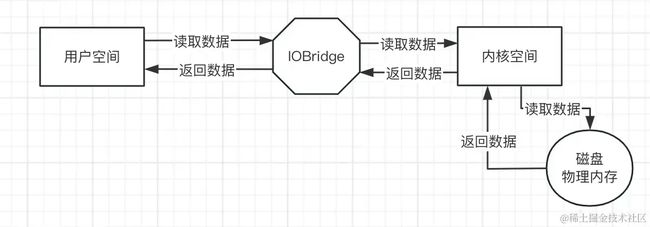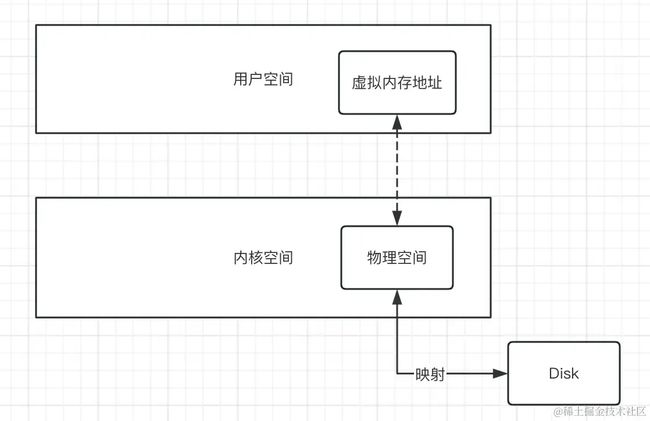腾讯数据持久化方案MMKV原理分析
提到数据持久化存储的方案,Android提供的手段有很多,在项目中常用的就是SharedPreference(简称SP),但是SP使用虽然简单,但是存在缺陷:
- 写入速度慢,尤其在主线程频繁执行写入操作易导致卡顿或者ANR;
- 不支持跨进程
因此针对这种缺陷,我们往往会换其他的技术方案,例如不能跨进程存取数据,那么就使用SQLite做数据存储,通过Provider对外提供数据,但是这种方案依然存在响应速度慢的问题,很有可能出现ANR,即便是放在了子线程中存取数据,但是依然会存在同步问题,直到MMKV的出现,好像一下就解决了上述的两个问题。
那么在文章开篇,我们通过一个小的demo验证一下SharedPreference和MMKV存储数据效率,看具体的效果如何。
object LocalStorageUtil {
private const val TAG = "LocalStorageUtil"
fun testSP(context: Context) {
val sp = context.getSharedPreferences("spfile", Context.MODE_PRIVATE)
//记录时间
val currentTime = System.currentTimeMillis()
for (index in 0..1000) {
sp.edit().putInt("$index", index).apply()
}
Log.d(TAG, "testSP: cost ${System.currentTimeMillis() - currentTime}")
}
fun testMMKV(){
val mmkv = MMKV.defaultMMKV()
//记录时间
val currentTime = System.currentTimeMillis()
for (index in 0..1000) {
mmkv.putInt("$index", index).apply()
}
Log.d(TAG, "testMMKV: cost ${System.currentTimeMillis() - currentTime}")
}
}
看下耗时:
D/LocalStorageUtil: testSP: cost 182
D/LocalStorageUtil: testMMKV: cost 15
我们看到,通过MMKV存储数据的效率有SP的10倍之多,而且这只有1000次连续存储,在数据量越来越大的时候,MMKV的优势就越明显,那么接下来我们先通过分析SharedPreference的源码,有利于理解MMKV源码。
1 SharedPreference源码分析
/**
* Retrieve and hold the contents of the preferences file 'name', returning
* a SharedPreferences through which you can retrieve and modify its
* values. Only one instance of the SharedPreferences object is returned
* to any callers for the same name, meaning they will see each other's
* edits as soon as they are made.
*
* This method is thread-safe.
*
*
If the preferences directory does not already exist, it will be created when this method
* is called.
*
*
If a preferences file by this name does not exist, it will be created when you retrieve an
* editor ({@link SharedPreferences#edit()}) and then commit changes ({@link
* SharedPreferences.Editor#commit()} or {@link SharedPreferences.Editor#apply()}).
*
* @param name Desired preferences file.
* @param mode Operating mode.
*
* @return The single {@link SharedPreferences} instance that can be used
* to retrieve and modify the preference values.
*
* @see #MODE_PRIVATE
*/
public abstract SharedPreferences getSharedPreferences(String name, @PreferencesMode int mode);
首先我们在使用SP之前,首先会获取到SharedPreference实例,就是通过调用getSharedPreferences方法,最终返回值是SharedPreferences接口实例,具体实现类就是SharedPreferencesImpl。
1.1 SharedPreferencesImpl类分析
首先通过Context获取SharedPreferences实例时,会传入一个文件名
ContextImpl # getSharedPreferences
@Override
public SharedPreferences getSharedPreferences(String name, int mode) {
// At least one application in the world actually passes in a null
// name. This happened to work because when we generated the file name
// we would stringify it to "null.xml". Nice.
if (mPackageInfo.getApplicationInfo().targetSdkVersion <
Build.VERSION_CODES.KITKAT) {
if (name == null) {
name = "null";
}
}
File file;
synchronized (ContextImpl.class) {
if (mSharedPrefsPaths == null) {
mSharedPrefsPaths = new ArrayMap<>();
}
file = mSharedPrefsPaths.get(name);
if (file == null) {
file = getSharedPreferencesPath(name);
mSharedPrefsPaths.put(name, file);
}
}
return getSharedPreferences(file, mode);
}
传入文件名之后,就会在mSharedPrefsPaths中查找是否创建过这个文件,我们可以看到mSharedPrefsPaths是一个Map,完成文件名与具体文件的映射。 如果这个文件不存在,那么就会创建一个文件,即调用getSharedPreferencesPath方法,然后将其存入mSharedPrefsPaths这个Map集合中。
@Override
public File getSharedPreferencesPath(String name) {
return makeFilename(getPreferencesDir(), name + ".xml");
}
最终调用了另一个getSharedPreferences重载方法,在这个方法中,会拿到创建好的.xml文件构建SharedPreferencesImpl类。
public SharedPreferences getSharedPreferences(File file, int mode) {
SharedPreferencesImpl sp;
synchronized (ContextImpl.class) {
final ArrayMap cache = getSharedPreferencesCacheLocked();
sp = cache.get(file);
if (sp == null) {
checkMode(mode);
if (getApplicationInfo().targetSdkVersion >= android.os.Build.VERSION_CODES.O) {
if (isCredentialProtectedStorage()
&& !getSystemService(UserManager.class)
.isUserUnlockingOrUnlocked(UserHandle.myUserId())) {
throw new IllegalStateException("SharedPreferences in credential encrypted "
+ "storage are not available until after user is unlocked");
}
}
sp = new SharedPreferencesImpl(file, mode);
cache.put(file, sp);
return sp;
}
}
if ((mode & Context.MODE_MULTI_PROCESS) != 0 ||
getApplicationInfo().targetSdkVersion < android.os.Build.VERSION_CODES.HONEYCOMB) {
// If somebody else (some other process) changed the prefs
// file behind our back, we reload it. This has been the
// historical (if undocumented) behavior.
sp.startReloadIfChangedUnexpectedly();
}
return sp;
}
SharedPreferencesImpl的构造方法
SharedPreferencesImpl(File file, int mode) {
mFile = file;
mBackupFile = makeBackupFile(file);
mMode = mode;
mLoaded = false;
mMap = null;
mThrowable = null;
startLoadFromDisk();
}
从SharedPreferencesImpl中的构造方法中可以看到,每次创建SharedPreferencesImpl都会调用startLoadFromDisk从磁盘中读取文件,我们看下具体实现。
private void startLoadFromDisk() {
synchronized (mLock) {
mLoaded = false;
}
new Thread("SharedPreferencesImpl-load") {
public void run() {
loadFromDisk();
}
}.start();
}
从源码中我们可以看到,是开启了一个名为SharedPreferencesImpl-load的线程去从磁盘中取文件,而且是通过new Thread这种方式,如果多次创建SharedPreferencesImpl对象,那么就会创建多个线程,会浪费系统资源。
SharedPreferencesImpl # loadFromDisk
private void loadFromDisk() {
// ......
// Debugging
if (mFile.exists() && !mFile.canRead()) {
Log.w(TAG, "Attempt to read preferences file " + mFile + " without permission");
}
Map map = null;
StructStat stat = null;
Throwable thrown = null;
try {
stat = Os.stat(mFile.getPath());
if (mFile.canRead()) {
BufferedInputStream str = null;
try {
str = new BufferedInputStream(
new FileInputStream(mFile), 16 * 1024);
map = (Map) XmlUtils.readMapXml(str);
} catch (Exception e) {
Log.w(TAG, "Cannot read " + mFile.getAbsolutePath(), e);
} finally {
IoUtils.closeQuietly(str);
}
}
} catch (ErrnoException e) {
// An errno exception means the stat failed. Treat as empty/non-existing by
// ignoring.
} catch (Throwable t) {
thrown = t;
}
synchronized (mLock) {
mLoaded = true;
// ......
}
在这个方法中,会通过BufferedInputStream(IO)从文件中读取数据,并将其转换为一个Map数据结构,其实我们通过查看文件中的数据格式,也能知道,其实就是key-value这种数据结构。
那么至此初始化的任务就完成了,这里需要注意一个同步的问题,就是加载磁盘数据时是异步的,所以有一个标志位mLoaded,在调用startLoadFromDisk时会设置为false,等到磁盘数据加载完成之后,才会设置为true。
所以这里我们需要关注几个耗时点:
- 从磁盘加载数据时,会把全量的数据加载进来,例如之前存在10_000条数据,那么也会全部读出来,因此IO读取会耗时;
- 数据读取完成之后,解析XML dom节点时也会耗时。
1.2 SharedPreference读写分析
前面我们介绍完初始化流程,接下来就是读写操作了,首先我们先看写操作;
sp.edit().putInt("$index", index).apply()
从文章开头的例子看,首先会通过SharedPreference获取到Editor对象,其实就是从SharedPreferenceImpl中获取Editor对象,对应的实现类就是EditorImpl。
SharedPreferenceImpl # EditorImpl
public final class EditorImpl implements Editor {
private final Object mEditorLock = new Object();
@GuardedBy("mEditorLock")
private final Map mModified = new HashMap<>();
@GuardedBy("mEditorLock")
private boolean mClear = false;
// ......
@Override
public Editor putInt(String key, int value) {
synchronized (mEditorLock) {
mModified.put(key, value);
return this;
}
}
// ......
}
在调用putInt方法时,会将其存储在HashMap中,然后可以调用apply或者commit方法将其写入文件,但是两者是有区别的。
EditorImpl # apply
@Override
public void apply() {
final long startTime = System.currentTimeMillis();
final MemoryCommitResult mcr = commitToMemory();
final Runnable awaitCommit = new Runnable() {
@Override
public void run() {
try {
mcr.writtenToDiskLatch.await();
} catch (InterruptedException ignored) {
}
if (DEBUG && mcr.wasWritten) {
Log.d(TAG, mFile.getName() + ":" + mcr.memoryStateGeneration
+ " applied after " + (System.currentTimeMillis() - startTime)
+ " ms");
}
}
};
QueuedWork.addFinisher(awaitCommit);
Runnable postWriteRunnable = new Runnable() {
@Override
public void run() {
awaitCommit.run();
QueuedWork.removeFinisher(awaitCommit);
}
};
SharedPreferencesImpl.this.enqueueDiskWrite(mcr, postWriteRunnable);
// Okay to notify the listeners before it's hit disk
// because the listeners should always get the same
// SharedPreferences instance back, which has the
// changes reflected in memory.
notifyListeners(mcr);
}
通过源码,我们看到在调用apply时写入磁盘的方式是异步的,在调用enqueueDiskWrite方法时传入了一个Runnable对象,这个时候不会阻塞主线程,但是没有写入是否成功的结果。
EditorImpl # commit
public boolean commit() {
long startTime = 0;
if (DEBUG) {
startTime = System.currentTimeMillis();
}
MemoryCommitResult mcr = commitToMemory();
SharedPreferencesImpl.this.enqueueDiskWrite(
mcr, null /* sync write on this thread okay */);
try {
mcr.writtenToDiskLatch.await();
} catch (InterruptedException e) {
return false;
} finally {
if (DEBUG) {
Log.d(TAG, mFile.getName() + ":" + mcr.memoryStateGeneration
+ " committed after " + (System.currentTimeMillis() - startTime)
+ " ms");
}
}
notifyListeners(mcr);
return mcr.writeToDiskResult;
}
而commit方法则是直接往磁盘中写数据,此时会阻塞线程直到数据写入完成,并返回写入成功或者失败的结果;所以两者具体在什么场景下调用,相信伙伴们应该能分辨的出来吧。
因为SharedPreference的读写操作依然是通过传统IO方式完成,所以这里就是一个耗时点,对于传统的读写操作涉及到应用层与Kernel的通信。
应用层只是发起读数据的指令,而真正的读写操作是在内核空间,其中传统的IO存储是两次拷贝,也是比较耗时的一种操作,如果将其换为零拷贝技术,那么就是一种极佳的优化策略,MMKV就是这么做的, 所以如果熟悉Binder通信以及mmap的伙伴可能就会明白,而不熟悉的伙伴,通过这篇文章则是会理解其中的原理。
2 mmap原理及使用
前面我们提到,在优化传统IO存储时,不想通过用户空间与内核空间上下文的调度来实现文件读写,所以就会想到mmap能够实现零拷贝读写文件,在效率上面肯定要比传统的磁盘IO要快,那么首先我们先看下mmap函数是如何使用,这里可能会涉及到C++以及JNI的知识储备。
2.1 mmap的使用
首先定义一个方法writeBymmap,在native层通过调用mmap函数实现文件的读写。
class NativeLib {
/**
* A native method that is implemented by the 'nativelib' native library,
* which is packaged with this application.
*/
external fun stringFromJNI(): String
external fun writeBymmap(fileName:String)
companion object {
// Used to load the 'nativelib' library on application startup.
init {
System.loadLibrary("nativelib")
}
}
}
对于mmap函数的参数定义,我们需要了解其中的意义。
void* mmap(void* __addr, size_t __size, int __prot, int __flags, int __fd, off_t __offset);
- _addr : 指向要映射的内存起始地址,一般设置为null由系统决定,映射成功之后会返回这块内存地址;
- _size : 将文件中多大的长度映射到内存空间;
- _port : 内存保护标志 ,一般为以下四种方式 -> PROT_EXEC 映射区域可被执行 PROT_READ 映射区域可被读取 PROT_WRITE 映射区域可被写入 PROT_NONE 映射区域不能存取;
- _flags : 这块映射区域是否可以被其他进程共享,如果是私有的,那么只有当前进程可映射;如果是共享的,那么其他进程也可以获取此映射内存;
- _fd : 要映射到内存中的文件描述符,通过open函数可以获取,存储完成之后,需要调用close;
- _offset : 文件映射的偏移量,一般设置为0.
extern "C"
JNIEXPORT void JNICALL
Java_com_lay_nativelib_NativeLib_writeBymmap(JNIEnv *env, jobject thiz, jstring file_name) {
std::string file = env->GetStringUTFChars(file_name, nullptr);
//获取文件描述符
int fd = open(file.c_str(), O_RDWR | O_CREAT, S_IRWXU);
//设置文件大小
ftruncate(fd, 4 * 1024);
//调用mmap函数,返回的是物理映射的虚拟内存地址
int8_t *ptr = static_cast(mmap(0, 4 * 1024, PROT_READ | PROT_WRITE, MAP_SHARED, fd,
0));
//要写入文件的内容
std::string data("这里是要写入文件的内容");
//用户空间可以操作这个虚拟内存地址
memcpy(ptr, data.data(), data.size());
}
通过调用了mmap函数可以拿到磁盘映射的物理内存的虚拟地址,看下图:
在内核空间有一块与磁盘空间映射的物理内存区域,而在用户空间是能够拿到这块物理内存的虚拟内存地址,即通过调用mmap函数获取;那么后续想要执行写入操作,那么只需要在用户空间操作虚拟内存即可,就可以将数据写入到磁盘中,不需要通过用户空间和内核空间的上下文调度,从而提高了效率。
经过测试,调用了NativeLib()的writeBymmap方法,在文件中写入了数据。
fun testMmap(fileName: String) {
//记录时间
val currentTime = System.currentTimeMillis()
for (index in 0..1000) {
NativeLib().writeBymmap(fileName)
}
Log.d(TAG, "testMmap: cost ${System.currentTimeMillis() - currentTime}")
}
我们可以采用这种方式计算一下,最终拿到的结果是:
D/LocalStorageUtil: testSP: cost 166
D/LocalStorageUtil: testMmap: cost 16
我们看到与MMKV的效率基本一致,但是前面我们自定义的mmap写文件方式是存在缺陷的:如果我们只想写1个字节的数据,但最终会写入4k的数据,会比较浪费内存。
2.2 跨进程读写数据
对于SharedPreference存储方式来说,无法支持跨进程读写数据,只能在单一进程存储,而如果想要实现跨进程数据存取,其实也很简单,看下图:
因为磁盘文件存储在手机sd卡中,在其他进程也可以通过读取文件的方式从磁盘获取,但这样又无法避免内核态到用户态的切换 ,因此通过上图看,进程A写入到磁盘数据之后,进程B也可以通过虚拟内存地址拷贝一份数据到本地,从而完成跨进程读数据。
extern "C"
JNIEXPORT jstring JNICALL
Java_com_lay_nativelib_NativeLib_getDataFromDisk(JNIEnv *env, jobject thiz, jstring file_name) {
std::string file = env->GetStringUTFChars(file_name, nullptr);
//获取文件描述符
int fd = open(file.c_str(), O_RDWR | O_CREAT, S_IRWXU);
//设置文件大小
ftruncate(fd, 4 * 1024);
//调用mmap函数,返回的是物理映射的虚拟内存地址
int8_t *ptr = static_cast(mmap(0, 4 * 1024, PROT_READ | PROT_WRITE, MAP_SHARED, fd,
0));
//需要一块buffer存储数据
char *buffer = static_cast(malloc(100));
//将物理内存拷贝到buffer
memcpy(buffer, ptr, 100);
//取消映射
munmap(ptr, 4 * 1024);
close(fd);
//char 转 jstring
return env->NewStringUTF(buffer);
}
具体的调用为:
NativeLib().getDataFromDisk("/data/data/com.tal.pad.appmarket/files/NewTextFile.txt").also {
Log.d("MainActivity", "getDataFromDisk: $it")
}
D/MainActivity: getDataFromDisk: 这里是要写入文件的内容
至此,通过mmap获取物理内存映射的虚拟内存地址后,只需要一次拷贝(memcpy)就能够实现文件的读写,而且支持跨进程的存取,这也是MMKV的核心原理。
上面这张图是从官网copy的一张图,这里显示了使用SharedPreference和MMKV的写入效率,其实为什么MMKV能够提升了几十倍的写入效率,还是得益于mmap的内存映射避免了内核态与用户态的切换,从而突破了传统IO瓶颈(二次拷贝), 从下篇文章开始,我们将会带着伙伴一起手写一套MMKV框架,能够对MMKV和mmap有更加深入的了解。
Android 学习笔录
Android 性能优化篇:https://qr18.cn/FVlo89
Android Framework底层原理篇:https://qr18.cn/AQpN4J
Android 车载篇:https://qr18.cn/F05ZCM
Android 逆向安全学习笔记:https://qr18.cn/CQ5TcL
Android 音视频篇:https://qr18.cn/Ei3VPD
Jetpack全家桶篇(内含Compose):https://qr18.cn/A0gajp
OkHttp 源码解析笔记:https://qr18.cn/Cw0pBD
Kotlin 篇:https://qr18.cn/CdjtAF
Gradle 篇:https://qr18.cn/DzrmMB
Flutter 篇:https://qr18.cn/DIvKma
Android 八大知识体:https://qr18.cn/CyxarU
Android 核心笔记:https://qr21.cn/CaZQLo
Android 往年面试题锦:https://qr18.cn/CKV8OZ
2023年最新Android 面试题集:https://qr18.cn/CgxrRy
Android 车载开发岗位面试习题:https://qr18.cn/FTlyCJ
音视频面试题锦:https://qr18.cn/AcV6Ap




